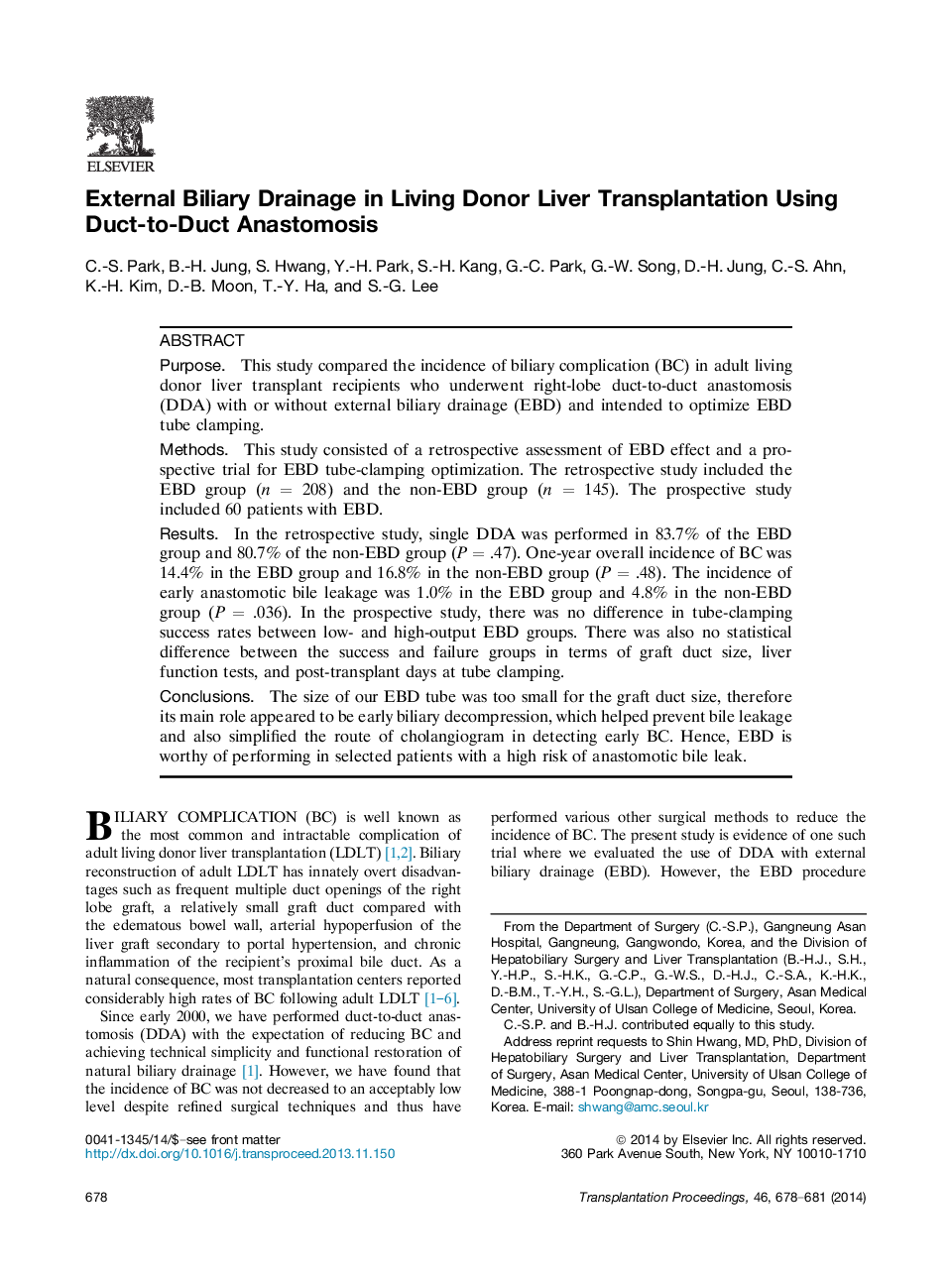| Article ID | Journal | Published Year | Pages | File Type |
|---|---|---|---|---|
| 4258368 | Transplantation Proceedings | 2014 | 4 Pages |
PurposeThis study compared the incidence of biliary complication (BC) in adult living donor liver transplant recipients who underwent right-lobe duct-to-duct anastomosis (DDA) with or without external biliary drainage (EBD) and intended to optimize EBD tube clamping.MethodsThis study consisted of a retrospective assessment of EBD effect and a prospective trial for EBD tube-clamping optimization. The retrospective study included the EBD group (n = 208) and the non-EBD group (n = 145). The prospective study included 60 patients with EBD.ResultsIn the retrospective study, single DDA was performed in 83.7% of the EBD group and 80.7% of the non-EBD group (P = .47). One-year overall incidence of BC was 14.4% in the EBD group and 16.8% in the non-EBD group (P = .48). The incidence of early anastomotic bile leakage was 1.0% in the EBD group and 4.8% in the non-EBD group (P = .036). In the prospective study, there was no difference in tube-clamping success rates between low- and high-output EBD groups. There was also no statistical difference between the success and failure groups in terms of graft duct size, liver function tests, and post-transplant days at tube clamping.ConclusionsThe size of our EBD tube was too small for the graft duct size, therefore its main role appeared to be early biliary decompression, which helped prevent bile leakage and also simplified the route of cholangiogram in detecting early BC. Hence, EBD is worthy of performing in selected patients with a high risk of anastomotic bile leak.
